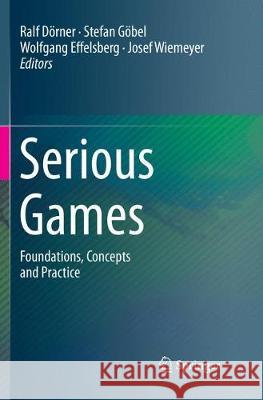Serious Games: Foundations, Concepts and Practice » książka
topmenu
Serious Games: Foundations, Concepts and Practice
ISBN-13: 9783319821375 / Angielski / Miękka / 2018 / 421 str.
Kategorie:
Kategorie BISAC:
Wydawca:
Springer
Język:
Angielski
ISBN-13:
9783319821375
Rok wydania:
2018
Wydanie:
Softcover Repri
Ilość stron:
421
Waga:
0.61 kg
Wymiary:
23.39 x 15.6 x 2.26
Oprawa:
Miękka
Wolumenów:
01
Dodatkowe informacje:
Wydanie ilustrowane











